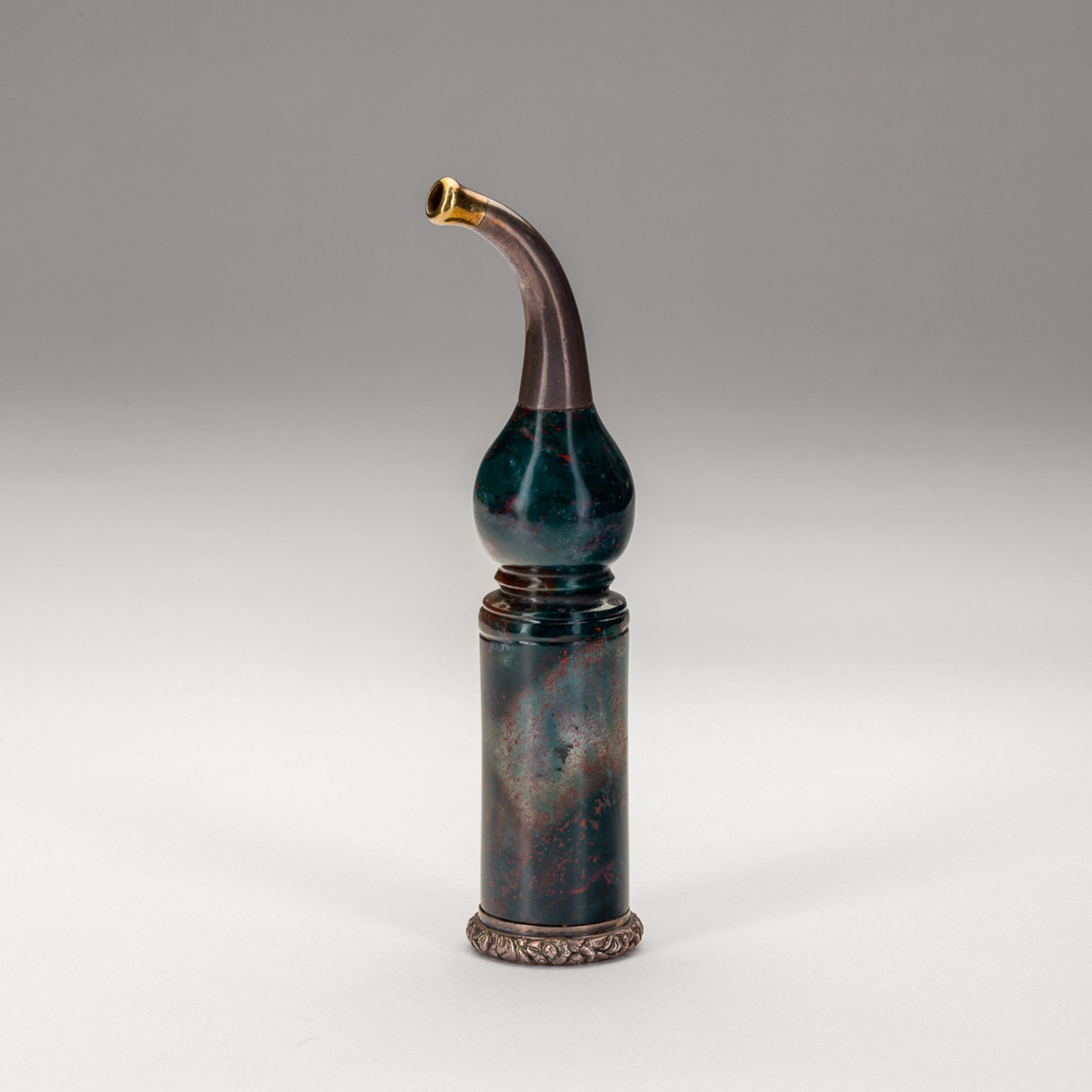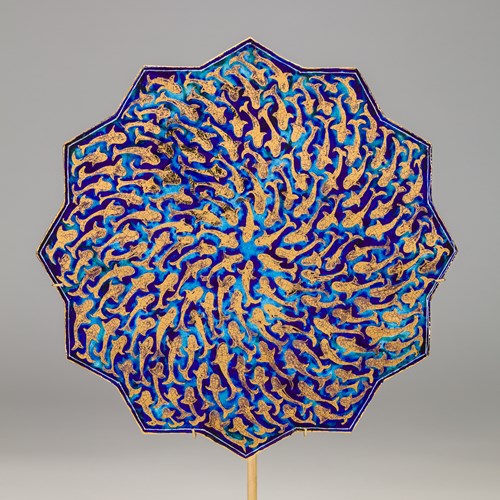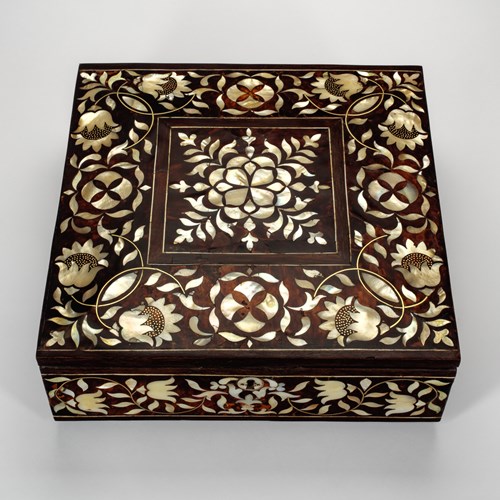Marketplace
Bloodstone Huqqa Mouthpiece
A huqqa mouthpiece (muhnal) cut from a single bloodstone, a semi-precious opaque green chalcedony with flecks of red jasper. It has been polished, probably with a bow-driven lathe, to a smooth and shiny surface. It has a waisted form just over halfway along its length. The base is mounted with a ring of silver, decorated with repoussé leaves and flowers.
Huqqa smoking began in the royal courts of Mughal India. Its origins are contested, but one story is that Portuguese emissaries introduced Emperor Akbar (1542-1605) to tobacco leaves and pipes. However, the emperor’s physician was worried about the health effects and devised the huqqa as a way to filter the smoke through water.1
The city of Ahmedabad in Gujarat, India, was a centre of processing and trading semi-precious hardstones to be used for utilitarian objects.2 A bloodstone huqqa mouthpiece, now broken into two, is held in the Victoria & Albert Museum, London (accession no. 01406:1/(IS) to 01406:2/(IS)). It is dated to c. 1850 and was made in Ahmedabad, Gujarat. A complete example in the same collection (accession no. 707-1874) is fashioned from a paler bloodstone. It has a similar waisted form, but is fashioned from two pieces, joined vertically. Other examples in the V&A of carved and polished bloodstone from mid-19th century Ahmedabad include a paperweight (accession no. 01429(IS)) and a ruler (accession no. 01390(IS)).
[1] Chatterjee, Baijayanti. ‘Hookah Smoking in Colonial Calcutta’, Wellcome Collection (2022), retrieved online via https://wellcomecollection.org/stories/hookah-smoking-in-colonial-calcutta on 25.06.2025.
[2] ‘Ruler’, Victoria & Albert Museum (2009), retrieved online from https://collections.vam.ac.uk/item/O472491/ruler/ on 25.06.2025.
Plus d'œuvres d'art de la Galerie








_T638207144083475395.jpg?width=500&height=500&mode=pad&scale=both&qlt=90&format=jpg)
 Untitled 1_T638206163537998306.jpg?width=500&height=500&mode=pad&scale=both&qlt=90&format=jpg)